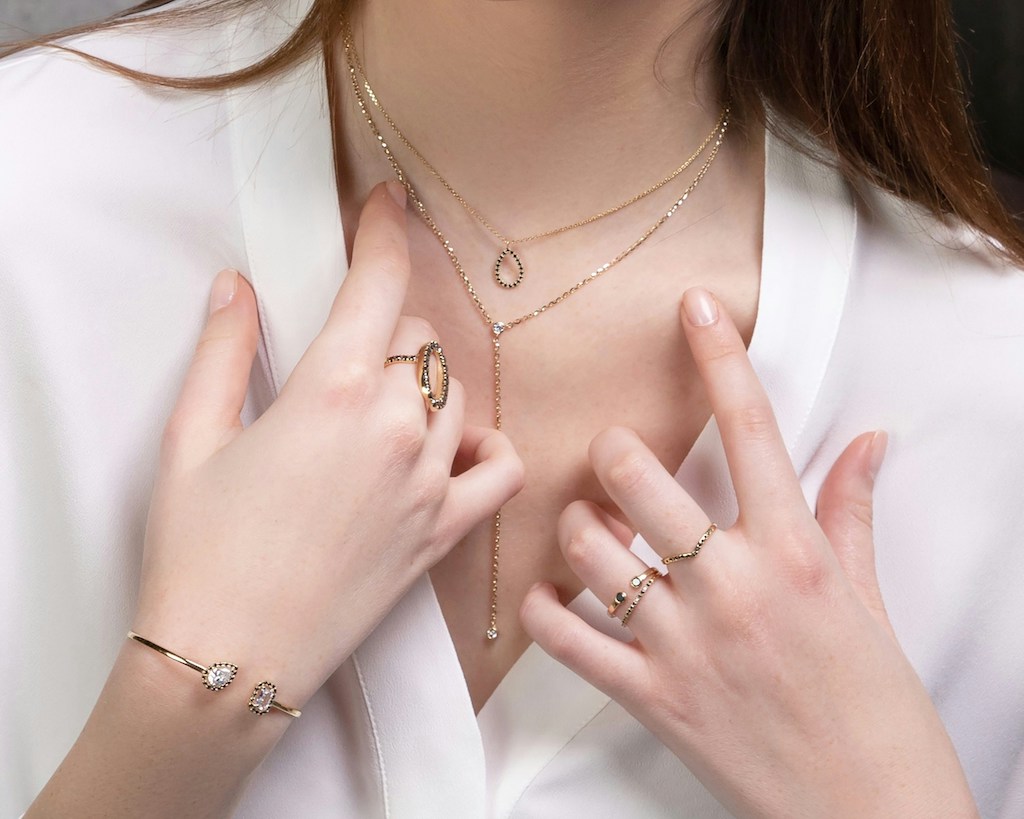
Starting a gold plated jewelry business can be very rewarding. There is a high demand for them among fashion lovers because it allows people to enjoy the glamour of gold without breaking the bank. Gold plated jewelry is a blend of luxury and affordability, fueling its demand around the world. In this blog, we go through some key things you should know about manufacturing gold-plated jewelry and what sets it apart from actual gold.
What is Gold Plated Jewelry?
Gold plated jewelry is made from a process where a thin layer of gold is added to the surface of another metal so that it takes the appearance of gold. In this case, the jewelry isn’t entirely gold but has its aesthetic beauty.
The Manufacturing Process
Manufacturing gold plated jewelry involves adding a thin layer of gold onto a base metal through electroplating. The carat and thickness of gold layered during the electroplating process often varies. In most cases, the thicker the gold used, the longer the jewelry will last. Usually, the thickness of hold used is about 0.5 to 1 microns. Also, the higher the carat, the more expensive and valuable the jewelry is.
Some of the metals typically used for gold plated jewelry include copper, silver, titanium, nickel, brass, and steel. Virtually all metal can be made into a piece of gold-plated jewelry. Modern processes also allow for any material to be gold plated, including plastics.
Steps Involved In Manufacturing Gold Plated Jewelry
Cleaning
Proper surface and deep cleaning is important once you have a metal of choice. This is to get rid of dust, oil, and other contaminants. Most manufacturers start with a mild cleaning of water with solvents, followed by deep cleaning using methods like steaming or electro cleaning. Afterward, the metal is rinsed thoroughly to remove cleaning agents.
Nickel Plating
This step involves coating the metal with a layer of Nickel to enhance the bond between the surface and the gold layer. Nickel plating also helps gold plated jewelry last longer because it takes time for the base metal to tarnish.
Rinsing
After the base coat of Nickel, it’s time to rinse again to remove excess plating.
Gold Plating
At the stage, the nickel-coated metal is dipped into a gold-filled vessel, where a process known as electroplating will fuse the gold on the item.
Rinsing and Drying
The last type of manufacturing gold plated jewelry is rinsing the newly gold plated item to remove excess gold. Next, the jewelry is dried and ready for sale.
Gold Plated Vs. Gold Filled Vs. Solid Gold Jewelry
Gold plated jewelry had a thin layer of gold on the surface of a less valuable metal like nickel, steel, and brass. Gold-filled jewelry is similar to gold plated jewelry except that they have a thicker layer of gold on the surface. For this reason, they are more valuable and expensive than gold plated jewelry and takes a longer time to tarnish.
Solid gold jewelry is pure gold, which makes them very valuable and pricier than gold plated and gold-filled jewelry. They stand the test of time and make great investments for those who possess it.
Conclusion
Gold plated jewelry has become a niche in the fashion world, offering an excellent choice for anyone who wants to indulge in gold without breaking a bank. The manufacturing processes involved in gold play also make it a great business opportunity for anyone who would like to start their jewelry business.
Although gold plated jewelry often wears off over time to reveal the underneath metal, it can last long if cared for properly. Whether you are a jewelry lover, jewelry seller or an aspiring jeweler, always keep your attention to the quality of your gold plated jewelry.




